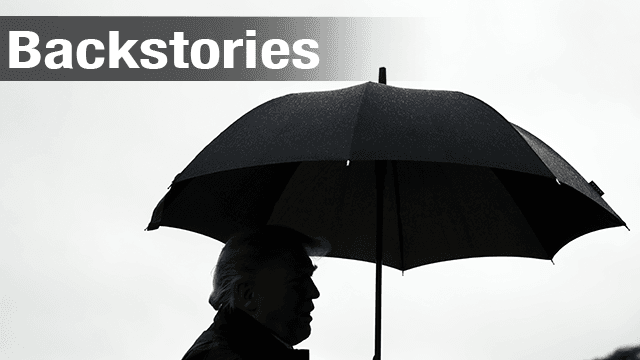Last weekend, the Asia-Pacific Economic Cooperation summit held in Papua New Guinea ended with no joint statement for the first time in its 25-year history. Trump skipped the meeting itself. US Vice President Mike Pence had a war of words with Chinese President Xi Jinping. He criticized China’s massive belt and road initiative, saying the loans come with strings attached and hefty debts. China quickly responded with harsh criticism on US protectionism. APEC no longer appeared to be a forum for the countries to reaffirm cooperation, but rather, just another place for the world's 2 largest economies to carry on their trade war.

The bottom line is that it’s pretty difficult to deal with America First, at least alone. Let me present you with an example.
Beijing imposed a 25 percent tariff on American soybeans in retaliation for US tariffs on Chinese goods. Chinese importers started buying more Brazilian beans to replace those from the US to avoid the extra cost.
So, American farmers should be angry with the White House, which could pressure administration officials to eventually reconsider US trade policy.
But that hasn't happened. Why?
The Europeans boosted its imports of US soybeans to surpass those by China. EU commission President Jean-Claude Juncker cleverly managed to strike a deal with Trump. He promised to buy the soybeans and in exchange, avoid US tariffs on European autos for the time being. Trump and the Europeans both got what they wanted.
But while Junker’s smart move fulfills the short-term goal of avoiding a clash with the US, in the long run, it might not benefit the EU and other countries trying to deal with the Trump administration. Every time a country offers the US a deal, Trump gets what he wants, which will allow him to claim “another victory.”
Many Japanese trade negotiators are now becoming increasingly worried about how Trump may influence trade deals in Asia. One of their main concerns is his possible impact on the Regional Comprehensive Economic Partnership, or RCEP. If a deal is reached among the 16 RCEP member countries including Japan, China and India, it’s expected to become a mega free trade agreement worth one third of the world’s GDP without the US.
Their fear comes from Trump’s tactics with Canada and Mexico. He won a renewed free trade agreement from them that includes a clause designed to forbid members from signing a trade pact with China.
US-Japan talks start in early 2019, and many experts point out that Trump may demand the same clause to be included in a bilateral deal. Furthermore, Washington may pressure other RCEP members to do the same in an aim to put the RCEP agreement in peril.
Protectionism may easily spread worldwide if Trump continues to pursue his America First policy. IMF Managing Director Christine Lagarde cited Mark Twain’s famous words, “History doesn’t repeat itself but it often rhymes” to warn leaders that they “should listen closely to the echoes of history and avoid replaying the discordant notes of the past.”

Going forward, what should Japan do to avoid a global slowdown stemming from a rising tide of protectionism?
One of the solutions will be to increase the membership of the new Trans-Pacific Partnership Agreement, or CPTPP, which will go into effect by the year end. Thailand and the UK have shown interest in the deal and the TPP members should be eager to welcome them in. If RCEP doesn’t work, it may be worth getting China to take an interest in the TPP. These are all ways to make the US eventually return to the TPP.
Recently, a piece written by Ivo Daalder and James Lindsay at the Council of Foreign Affairs titled “The Committee to save the World Order” caught my attention. The writers call for the creation of a new Group of 9, or G9. It would include a team of 9 US allies including Japan, Germany, France, Canada, Australia, and the UK. The globalist duo calls for them to work together to protect and preserve liberal world order and its principles such as free trade and globalism, which the US has been doing for years. People are starting to wonder if the Trump administration will last for 2 more years or 6. The piece reads, "American allies should step up as America steps down."
Another important step is to speed up WTO reforms. The World Trade Organization has been criticized over the years for not being able to stop many countries, including China, from violating trade and intellectual property rules. Trump is threatening to withdraw the US from the WTO. The Japanese and Europeans are trying to stop that by compiling a joint proposal for quick and comprehensive WTO reforms, and it’s vital that they find more members endorsing their proposal to accelerate the process.
Next week, G20 leaders will meet in Buenos Aires to resolve global economic issues. A US-China Summit held on the sidelines will be very much in focus. And Japan will be handed the chair of the G20 meetings in 2019 -- at a time the global economy is shaky and protectionism is spreading.

